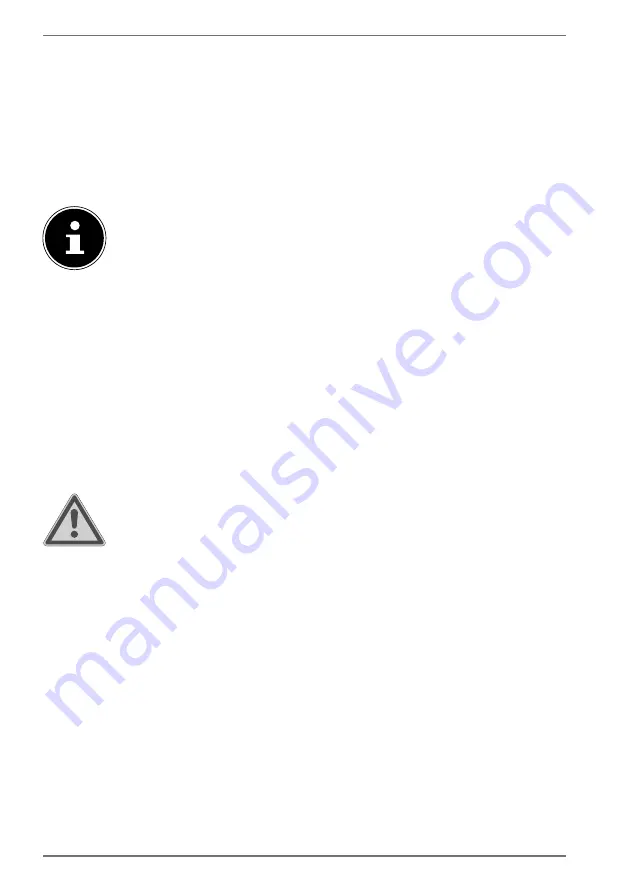
60
Dry vegetables thoroughly before placing in the cooling chamber. The storage
time is reduced for vegetables with a high water content (e.g. leaf vegetables,
cucumbers).
11. Using the ice cube compartment
Drinks in bottles and cans, particularly those that are carbonated, must not be
stored in the ice cube compartment (1) as the bottles and cans may burst.
Fruit can be frozen in the ice cube compartment and ice cubes can be made.
The ice cube compartment is not suitable for freezing foods or storing
highly perishable foods. Food that has already been frozen can, if neces-
sary, be stored in suitable packaging for 1–3 days.
11.1. Making ice cubes
Clean an ice cube tray (not supplied) thoroughly before using for the first time.
Fill the ice cube tray with drinking water.
Place the ice cube tray in the ice cube compartment.
As soon as the ice cubes are frozen and you require ice cubes, remove the ice
cube tray from the ice cube compartment and press the ice cubes out of the
mould.
12. Defrosting the ice cube compartment
WARNING!
Risk of injury!
Risk of burns resulting from the low temperatures.
Do not touch the ice cube compartment’s frozen in-
ner walls or frozen foods with your hands. Use a dry
cloth, for example, to hold the frozen products.
Thick deposits of ice on the ice cube compartment surfaces reduce the efficien-
cy of the appliance and increase the energy consumption. Defrost the appliance
regularly, as soon as the layer of ice is more than 3–4 mm thick.
Summary of Contents for MD 37148
Page 37: ...38 ...
Page 105: ...106 ...






























